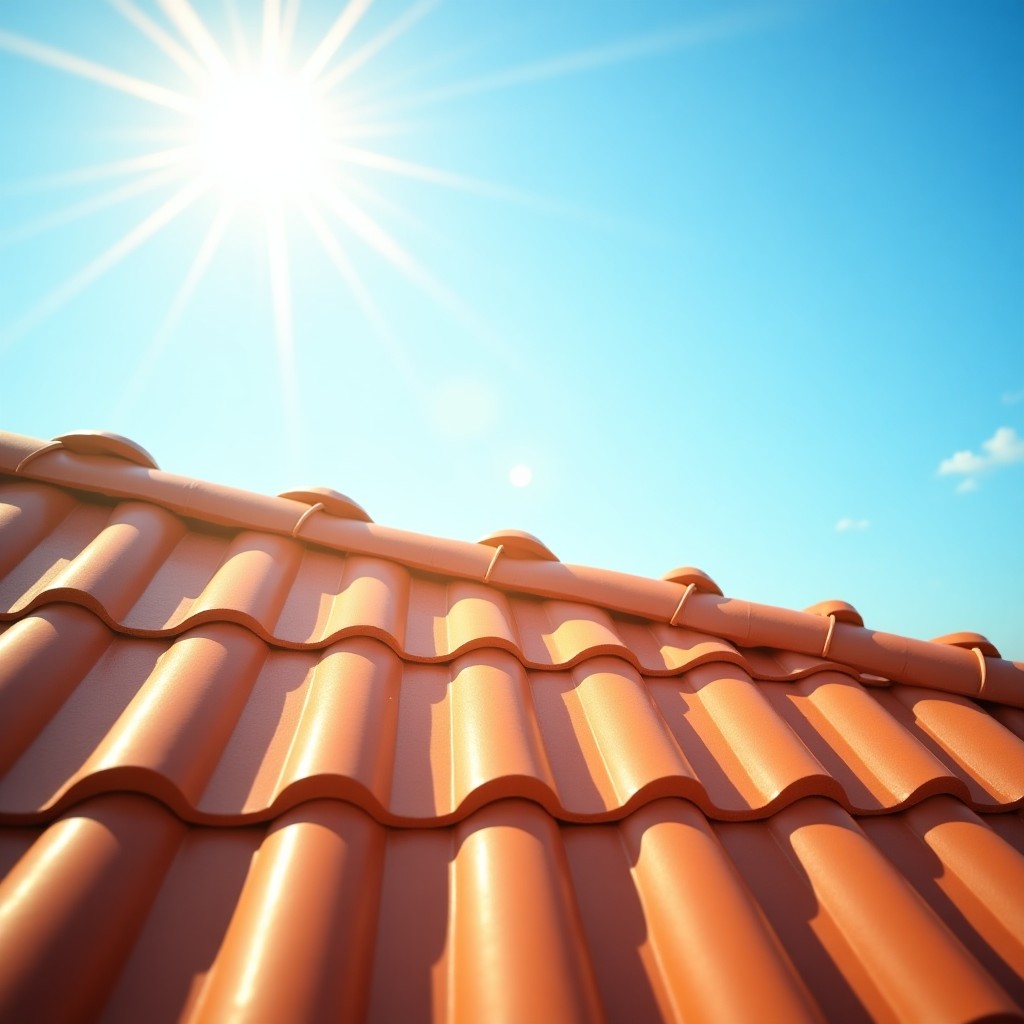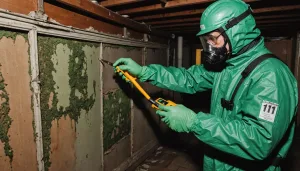For homeowners embarking on the journey of selecting the optimal roofing materials, understanding your climate is a fundamental step. Each region’s unique weather patterns and environmental conditions heavily influence the suitability and performance of various roofing options. A well-informed decision can ensure that your roof not only stands the test of time but also enhances the comfort and energy efficiency of your home.
When evaluating your local climate, consider the following elements:
- Temperature Extremes: Areas subject to harsh heat or intense cold require materials that can withstand such fluctuations without degrading. For instance, roofing materials like metal or clay tiles are excellent in hotter climates due to their reflective properties, while asphalt shingles might perform better in milder zones.
- Precipitation: Regions with heavy rainfall or snowfall demand roofing systems that offer superior water resistance and shedding capabilities. Roofs with steeper pitches and materials like slate or metal are effective at channeling away moisture and preventing water infiltration.
- Wind Resistance: If you live in an area prone to high winds or storms, select materials known for their robustness and ability to resist uplift. Metal roofs and specially manufactured asphalt shingles designed for high-wind regions can provide the needed durability.
- Sun Exposure: Constant exposure to UV rays can deteriorate some materials faster. Roofing options like clay tiles and treated metal come with inherent UV resistance, ensuring longevity even under intense sunlight.
For a more detailed perspective on how different climates align with specific roofing material choices, consider the following comparative table:
| Climate Type | Recommended Materials | Performance Characteristics |
| Hot and Arid | Metal, Clay Tiles | Heat reflective, durable, low maintenance |
| Cold and Snowy | Asphalt Shingles, Metal | Excellent insulation, snow shedding capability |
| Humid and Rainy | Slate, Metal | Mold-resistant, excellent water drainage |
| Windy Regions | Reinforced Asphalt Shingles, Metal | High wind resistance, durability |
| Coastal Areas | Metal, Composite | Salt resistance, corrosion-proof |
By aligning your roofing material choice with the specific demands of your region, you extend the lifespan and effectiveness of your roof. Homeowner guides emphasize the importance of not only considering aesthetics but also prioritizing materials that cater to the weather extremities your home will face. In doing so, you safeguard your investment and ensure that your roof can serve its primary function effectively, providing security and comfort for your household.
evaluating roofing material options
When you’re ready to delve into the specifics of roofing materials, it’s vital to conduct a thorough evaluation, as this can significantly impact factors such as durability, cost, and energy efficiency. Here’s a step-by-step exploration of the process:
- Research and List Potential Materials: Start by compiling a list of common roofing materials suited for your climate. Options typically include asphalt shingles, metal, clay tiles, wood shake, slate, and composite materials. Make use of homeowner guides that can offer valuable insights and reviews about these materials.
-
Understand the Characteristics of Each Material: Delve into the specifics of each option to understand its properties. For instance, asphalt shingles are known for their affordability and ease of installation, while metal is praised for its longevity and resistance to extreme weather conditions. Consider characteristics such as:
- Longevity and durability, especially under harsh climate conditions.
- Eco-friendliness and whether the material can be recycled.
- Visual appeal and compatibility with your home’s architectural style.
- Assess Weather Resilience: Pay special attention to how each material performs under the specific climate conditions of your area. For instance, metal and slate are excellent choices for wet and humid climates due to their water resistance, whereas clay tiles offer superb performance in arid and sunny environments because of their thermal properties.
- Consider Energy Efficiency: Some materials offer better thermal performance, affecting your home’s energy efficiency. Cool roofing materials, often certified by organizations such as Energy Star, can reduce heat absorption, lowering your cooling costs during hot months.
- Evaluate Maintenance Needs: Every roofing material comes with its own set of maintenance requirements. Metal roofs generally require minimal upkeep, whereas wood shakes may need regular treatments to prevent rot and insect damage. Calculate the long-term maintenance costs and efforts associated with each option.
- Cost Analysis: Examine both the upfront costs and potential savings over time. While slate or metal may come with higher initial expenses, they often offer enhanced durability and longevity, potentially making them cost-effective choices over the long run.
- Consult with Professionals: Once you have narrowed down your options, consulting with roofing professionals or contractors can provide further guidance. They can offer practical insights based on experience, suggest alternatives you might not have considered, and help tailor your choice to your specific climate and home requirements.
Understanding the diverse options available allows for a strategic approach to selecting your roofing materials. By balancing cost, performance, and maintenance, you can enhance not only the longevity of your roof but also improve your home’s overall protection against the climate challenges it regularly faces.
energy efficiency considerations
Energy efficiency is a pivotal factor when selecting roofing materials, especially given the various climates homeowners might face. A thoughtfully chosen roof can significantly reduce energy consumption in a home, leading to lower utility bills and a reduced environmental footprint. Certain roofing materials offer distinct energy benefits based on their ability to reflect solar heat, contribute to thermal regulation, and minimize heat ingress during extreme temperatures.
One of the most effective ways to enhance energy efficiency is by choosing roofs that are designed to reflect more sunlight and absorb less heat. Cool roofing materials, such as those made from light-colored metal or coated with reflective coatings, are particularly beneficial in hot climates. These materials can decrease roof surface temperatures by up to 50°F, thereby reducing the heat transmitted into the living space below. As a result, homes in such regions can rely less on air conditioning, leading to substantial savings on energy bills throughout long, scorching summers.
Another key energy consideration is the insulation properties of different roofing materials. For cold climates, roofing materials that provide excellent insulation, such as clay tiles or composite shingles, help retain heat within the home. This quality minimizes the need for constant heating, allowing residents to enjoy warmer interiors without excessively high heating costs. Insulated roofing solutions not only maintain comfortable indoor temperatures but also prevent ice dam formations during freezing conditions, safeguarding the roof’s structural integrity.
Additionally, adaptations such as adding thermal barriers or utilizing breathable underlayment can reinforce energy efficiency. These enhancements create an extra layer between the roof and the attic space, curbing heat loss in winter and limiting heat gain in summer. Homeowner guides often emphasize integrating sustainable options such as green roofs or solar installations, which further enhance energy self-sufficiency. While investing in solar panels represents a significant upfront cost, the long-term benefits include reduced reliance on grid electricity and potential tax incentives, making it a worthwhile consideration for those conscious of both energy costs and environmental impact.
Moreover, innovations in roofing technology provide eco-friendly solutions that don’t compromise aesthetics. Enhanced sustainable options blend seamlessly with traditional home designs, proving that energy efficiency and style can coexist. By opting for these advanced materials and techniques, homeowners not only optimize their home’s thermal performance but also contribute to environmental conservation. The insights offered by expert sources and homeowner guides underscore the importance of aligning roof choices with specific climatic challenges and energy efficiency goals. In this way, a well-selected roof acts as a shield against external temperature extremes while serving as an agent of long-term ecological and economic advantages.
assessing durability and maintenance
When examining the durability and maintenance aspects of roofing materials, it becomes evident that not all options offer the same level of resilience and upkeep requirements. The choice you make here plays a critical role in determining the longevity and reliability of your roof, especially when facing diverse climate challenges. Homeowner guides repeatedly underscore the importance of balancing durability with maintenance needs, stressing that a proactive approach can significantly extend the lifespan of a roof.
Firstly, consider the inherent durability of various roofing materials. Metal roofs, for instance, are renowned for their robustness and capability to resist harsh environmental conditions like high winds, heavy rains, and intense sun exposure. This durability is complemented by their minimal maintenance demands, usually requiring only periodic inspections and occasionally tightening of fasteners. Furthermore, the inherent resistance of metal to rust and corrosion makes it particularly suitable for coastal areas where salt air might compromise other materials.
On the other hand, materials like asphalt shingles, while popular for their cost-effectiveness and ease of installation, may not offer the same longevity as metal or clay tiles. Asphalt requires more frequent inspections and maintenance, as harsh weather conditions can lead to granule loss, curling, or even detachment over time. Regularly checking for damage and replacing affected shingles can help maintain their performance. Homeowner guides often advise opting for higher-grade asphalt shingles for better durability in challenging climates.
Slate and clay tiles are also noteworthy for their durability and aesthetics. They boast a long lifespan, often lasting 50 years or more, which can offset their higher initial costs. However, their maintenance involves ensuring the supporting roof structure is robust enough to handle their substantial weight. Additionally, while generally lower-maintenance, this type of roofing can be more vulnerable to individual tile breakage, particularly in regions prone to hail or heavy impact from falling debris. Regular inspections and timely replacement of broken tiles are crucial to maintaining their integrity.
Wood shake roofs, while offering a charming rustic appearance, require comprehensive ongoing care to safeguard against rot, mold, and insect damage. This involves periodical treatments with preservatives and regular inspections for signs of moisture infiltration. Such high-level maintenance, although labor-intensive, preserves the unique aesthetic appeal and structural health of wood roofing.
Implementing regular maintenance routines is pivotal regardless of material choice. This includes clearing debris, inspecting for and repairing leaks, and cleaning gutters to prevent water accumulation and damage. Climate-specific concerns, such as protecting against prolonged sun exposure or preparing for heavy snowfalls, should guide your maintenance strategies. Homeowners often rely on guides for season-specific advice and professional services when an expert touch is required.
Ultimately, choosing the right roofing material involves weighing its initial durability against ongoing maintenance efforts. Understanding the climate-specific demands your roof will face allows you to make informed decisions, ensuring that both materials and maintenance practices are tailored to provide optimal performance and longevity. In this way, a well-maintained, durable roof not only protects your home but also enhances its value and utility across the seasons.
cost implications and budget planning
Understanding the financial aspect of roofing projects is crucial, as it directly affects your budgeting and planning process. The initial outlay for roofing materials varies widely depending on the type, quality, and installation requirements, and selecting the right material within your budget without compromising on quality can be challenging. Thus, a careful evaluation of both upfront and long-term costs is essential to make an informed choice that aligns with financial considerations and climate adaptability.
The cost of roofing materials can range dramatically. Asphalt shingles, popular for their affordability, generally offer one of the lowest initial costs. However, while they are budget-friendly, their lifespan may be shorter compared to pricier alternatives, potentially leading to replacement sooner than other materials. Homeowner guides often advocate for conducting a cost-benefit analysis to weigh initial savings against the potential need for repairs or replacements over time.
Premium roofing options such as metal, slate, and tile represent higher upfront investments but are celebrated for their durability and minimal maintenance requirements. When considering climates with severe weather conditions, investing in more resilient materials can offer considerable long-term savings, mitigating expenses associated with frequent repairs or replacements. Additionally, many of these materials can enhance your home’s energy efficiency, leading to reduced utility costs, which should also factor into your financial planning.
Labor costs are another significant factor, as installation complexity can vary by material type. Materials like slate and tile not only require specialized installation skills but also demand robust structural support due to their weight, possibly adding to the cost. To manage these expenses, seek estimates from multiple contractors to ensure competitive pricing without sacrificing workmanship quality. Investing time in thorough research, including consulting homeowner guides and professional advice, can provide clarity on choosing materials and contractors that fit your budget and climate needs.
Budget planning should also account for potential unforeseen expenses. Set aside a contingency fund within your roofing budget to cover unexpected issues that might arise during installation, such as repairing structural damage or addressing code compliance requirements. This foresight helps prevent budget overruns and ensures the project stays on track financially.
In conclusion, selecting the right roofing material requires a careful balance of capabilities and costs. By considering your climate and understanding the strengths and limitations of different materials, you can make a well-informed choice that suits your home’s specific needs. This strategic decision not only protects your home but also optimizes its energy efficiency and withstands the challenges posed by your local environment.





